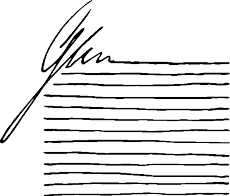The origins of the carpet trade on the Greifswalder Bodden lie in a three-year fishing ban on herring, the bread fish of the fishermen near the coast, at the end of the 1920s. After alternative sources of income such as asparagus cultivation or chicken farming were discarded, carpet weaving came into focus - following the existing skills of knotting nets.
The Viennese carpet expert and tapestry artist Rudolf Stundl, who was the artistic director of the company from 1928, was largely responsible for the development of the characteristic motifs. On the basis of oriental process and knotting techniques, Stundl and his wife Frieda Stundl-Pietschmann developed a pictorial language typical of the region, independent in colour and form. It was and is shaped by the everyday motifs of life and work on the Baltic coast and are a reflection of the coastal landscapes of Western Pomerania that surround them.
At the time, the fishing carpet was a creative solution in times of need and a venture. However, it is still a valid approach to regional development, diversification and the generation of added value. From the very beginning, carpets have adorned parlours, town halls and churches, they have been a state gift and in many cases an everyday object. And so they still convey identity for many people in the region and are positively anticipated as a "piece of home".





















